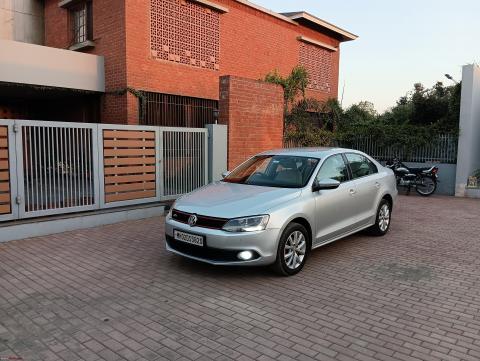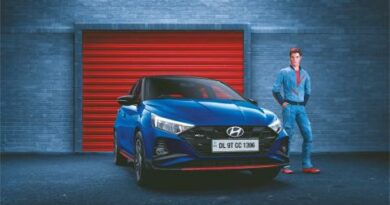How I solved a peculiar starting issue on my Jetta for just Rs. 2,500
My DMF might have been defective, but there was no way it could be causing the issue I was having, especially the misbehavior when the engine was hot.
BHPian Vishy76 recently shared this with other enthusiasts.
VAG 2.0 TDI Hot-Start issue
This post is a guide to a very common yet often ignored issue which plagues the VAG group 2.0 TDI engines. I will delve deep into the symptoms that help identify it, what causes it and how to sort it out.
Backstory
I own a 2014 VW Jetta 2.0 TDI manual. The car had around 90K km on the ODO when it had its first clutch and DMF change. It turned out however that the DMF and clutch were faulty. They were replaced again under warranty by the FNG yet the same symptoms continued. I won’t delve deep into what caused it and why. That is beyond the scope of this thread. What I did do to put an end to this harrowing chapter is invest in a Sachs clutch kit and DMF and all was well.
However, before I installed the Sachs clutch kit and DMF, I had noticed another issue. I wasn’t sure if it was due to the DMF or clutch, or something completely unrelated. Some of the symptoms are listed below:
- A shudder or loud clunk from the bell housing just before the engine came to life
- The car would sometimes start and immediately shut off. I had to hold the key in the start position continuously and the car would usually start on the 2nd or worst case 3rd attempt
- Most importantly, both these symptoms were only observed on a hot engine.
- A cold start would never exhibit these
- The severity of the issue was increasing but at a very gradual rate. In fact, the car only misbehaved around 2-3/10 times which made the issue hard to replicate. Though I had found a trick to replicate it by the end
Ageing like fine wine. She’s crossed the 1.1L km mark now and I might have to part ways with her against my wish:
A video of the issue. Note the shudder or pronounced ‘thunk’ when the engine comes to life and how lazily the starter turns over.
A more advanced stage of the same issue. Again, note how the engine cranks and then shuts off immediately twice.
I was chatting with my mechanic friend from Nashik when I casually mentioned this issue to him. It wasn’t a huge deal for me considering the nightmarish experience I was having with the DMF and clutch. I also remarked that replacing the DMF and clutch would “possibly” put an end to this issue too. He had a different way of looking at it.
He went on to explain that the DMF has absolutely nothing to do with the starting characteristics. My DMF might have been defective, but there was no way it could be causing the issue I was having, especially the misbehavior when the engine was hot. He suggested checking the integrity of the starter motor system, including the wiring, battery, terminals and the starter itself.
Armed with this checklist, I started my R&D.
Battery
The battery in my car was a 1.5 year old SF-Sonic DIN60 unit. It was having issues with acid discharge at the terminals already and that made me suspect it even more.
However, when it was put through the usual battery tests, it passed with flying colours. Consequently, no warranty requests were honoured either.
Since I was hell bent on solving the issue and the battery had already damaged the negative terminal due to acid discharge, I decided to throw the damn thing away in favour of a brand new Amaron-FLO unit of the same spec.
Did it solve the issue? No! The hot start trouble persisted. I was a bit disappointed at this point. However, every time my Jetta has thrown a tantrum, it is only persistence that has helped me solve it. Most importantly, I have always learnt something from these experiences. I knew this was a sign that I had to delve deeper into the root cause of the issue in my own style and come out victorious by hook or by crook.
Haven’t had a good run with SF-Sonic/Exide batteries in general. This one damaged the negative terminal due to acid leakage. The Exide on the Kwid conked off within 1.5 years:
Wiring & terminal integrity
The common points of failure here are the terminals themselves. Terminals on the battery and the starter motor main supply line and of course the grounding points on the body. Any signs of corrosion or a loose contact on these can also cause the issue. I did a visual inspection of all these and found nothing wrong.
More importantly, since the issue ONLY persisted on a hot engine, I knew heat buildup was a factor here. This brought me to my last suspect.
Starter Motor
The starter motor is one of the most important electronic components on a car. While its name and primary construction might sound and even be simple enough, it is still difficult for many electricians to troubleshoot starter motor issues as I noted during my own experience. The starter typically has 3 core components:
I casually consulted my FNG and asked the in-house electrician to overhaul the starter and diagnose the issue. He got back saying the starter motor solenoid has a problem and is the cause of the hot-start issue. However, I found this explanation to be rubbish for the following reasons:
- The starter motor solenoid is like an on-off switch. It can either work perfectly and transfer all current or it might not work at all and cause the starter to not engage in totality. In my case, the starter was engaging, but it wasn’t spinning fast enough
- If the solenoid had indeed gone wrong, intermittent starting issues would be faced with repeated click click sounds when I turned the key but no response from the starter
The bendix mechanism was also found to be in perfect shape during overhaul as expected. A bad bendix would cause improper mating between the starter pinion and flywheel teeth leading to grinding noises and lots of impact damage on both parts. Again, both were found to be in perfect condition.
This brought me to the final suspect. The motor itself. Theoretically, the symptoms I was facing coincided perfectly with those that a weak starter motor would exhibit.
In a nutshell, it is known that resistance across any wire or coil increases with an increase in temperature. As resistance increases, current tends to decrease. This is the working principle of a resistor. However, in case of a motor, this is undesirable since a current decrease doesn’t allow the motor to spin as fast as it should.
On a cold engine, as the starter was cold, the car would start almost seamlessly. However, as engine temps rose and heat lingered in the engine bay, the starter temperature would also naturally increase. When I loaded the hot starter up by asking it to crank the engine on a battery which would naturally underperform a bit too due to the heat around it, the starter failed to spin as fast as it should have.
This would cause a shudder from the DMF as it had to take up slack between the underperforming starter motor and an engine that wanted to start.
With the theoretical bit clear, I then did some R&D on what could go wrong in the starter motor itself and the two parts which could exhibit mechanical wear. Here’s a video on how a DC motor (the core component of a starter motor assembly) works.
- Armature: Responsible for conducting current and generating EMF or electromotive force which in turn generates torque and spins it
- Carbon brushes: Transfer current from stationery wire and armature coils to the spinning rotor
Since the carbon brush rides on the commutator, it can naturally abrade with time. This abrasion can cause it to make improper contact with the commutator, leading to improper current transfer and inefficient starter functioning.
I managed to source a carbon brush kit for my starter mercifully. Had the starter removed at an FNG, took it to an electrician who was recommended by my trusted mechanic and had the brush kit changed and the armature polished. The planetary gears etc were left alone and not greased since the same had been done 3-5 months back during overhaul.
The starter motor out of the car. Held in place by two bolts at the top and one from the bottom IIRC. The small cylindrical object on top is the solenoid switch:
The carbon brush kits. Old one on the right, new one on the left. The brushes are covered in plastic casing and are spring loaded to push against the commutator face and maintain contact. You can see them sticking out on the old one. Zoom in and you will see wear on them too:
The starter motor core. The pure copper coloured part which is slim is the commutator on which the carbon brushes ride. The larger cylindrical part contains windings and is the armature:
The electrician did claim that the soldering on the core had gone weak and putting new brushes might or might not work. Mercifully, it did:
Re-installed the starter, put everything back together. And on the first crank itself, I could make out a stark difference. There was a marked eagerness in the starter motor note now, completely missing before. The starter sounded a lot more enthusiastic.
I tested the cranking on a hot engine too numerous times and the result was the same. The car started in a single crank each and every time and the irritating shuddering noises from the DMF were now history. It’s been almost a year since I had this overhaul done and the starter continues to perform perfectly. It sounds almost like a petrol in the below videos, but with time, as the new carbon brushes bedded in, the speed decreased and settled to what it should be on a perfectly healthy unit. Job well done!
The carbon brush kit comes to around Rs. 800-1200 these days. Labour for removing the starter was on the higher side at Rs. 1500. The electrician was a kind soul. Only charged me Rs. 100 even though he could have quoted more. All in all, the entire job was done for under Rs. 3,000. Quite a steal compared to a brand new starter which would cause 9-10x more.
How the car starts post overhaul. Do note this is on a hot engine.
Smaller yet significant things
- Most people resort to putting oversized batteries and overcoming the issue. Although the battery is the first thing to check here, increasing battery capacity if the starter cannot perform on stock spec is a temporary jugaad at best. There will be a point where the issue will rear its head again once the starter wears out enough
- The Jetta came with 2 different starter motor makes in its life. From 2011 to a certain month in 2012, a Valeo branded starter motor was in use. Post this, a more common Bosch make motor was used. Finding carbon brush kits for the Valeo starter motor is tougher than the Bosch unit
- It is sad to see that most garages can’t troubleshoot issues like these. They either attribute it to the DMF, or ask owners to live with it. Both of which are the wrong way
- A new starter motor assembly for the Jetta ranges from 25-30K or more. OE Child parts are not available.
- The starter solenoid and brush kit atleast are available aftermarket thankfully. I have however heard of people binning the entire starter motor (and even DMF in some cases) to sort the issue.
As always, thanks for reading and see you around on another thread.
Read BHPian comments for more insights and information.
Source: Read Full Article









